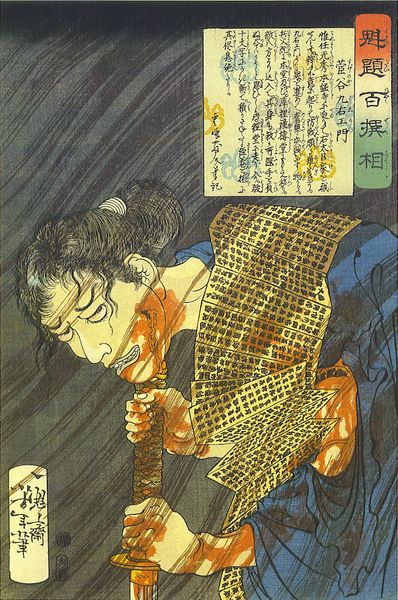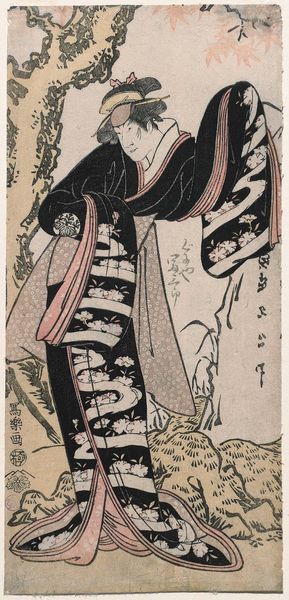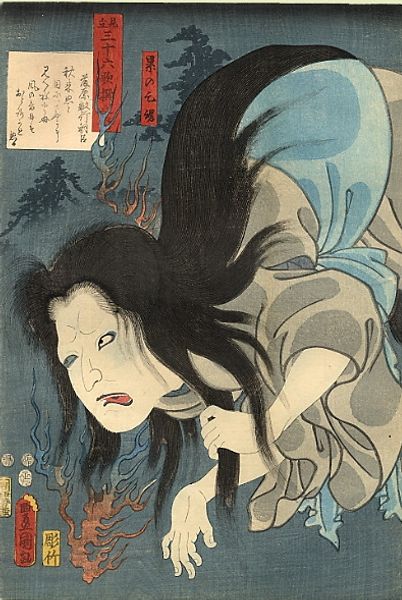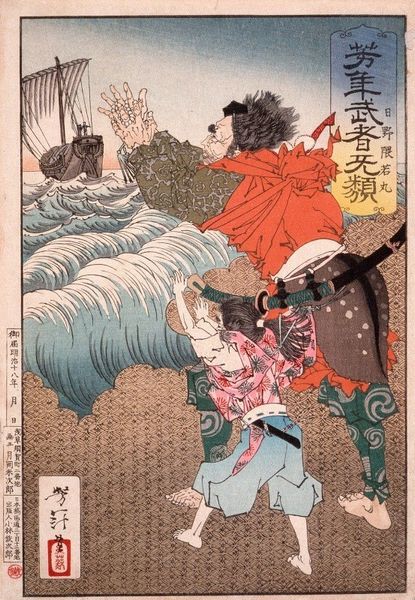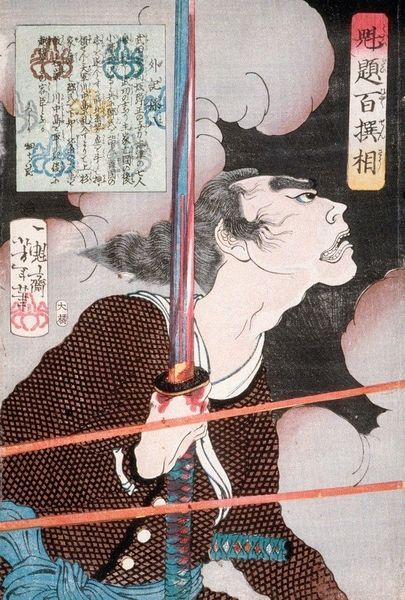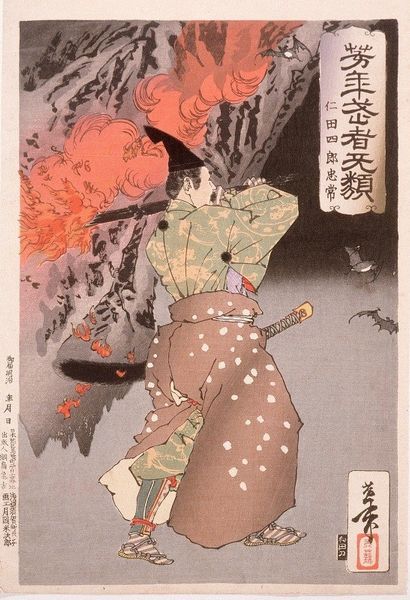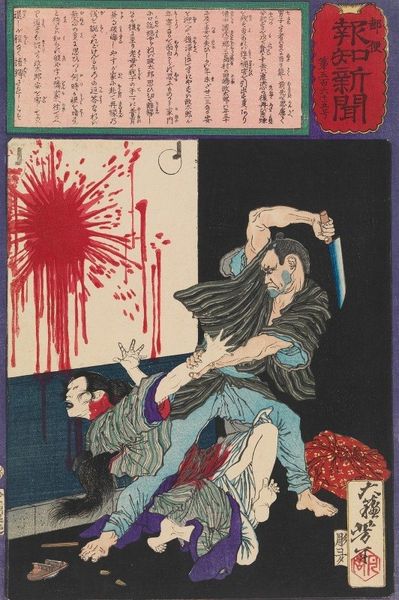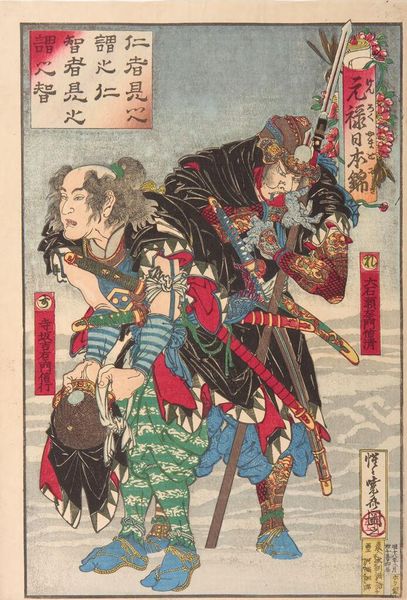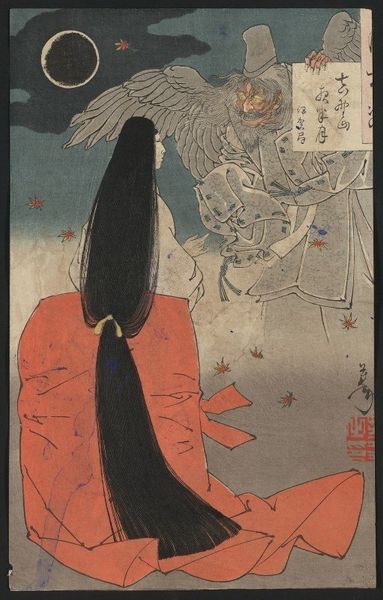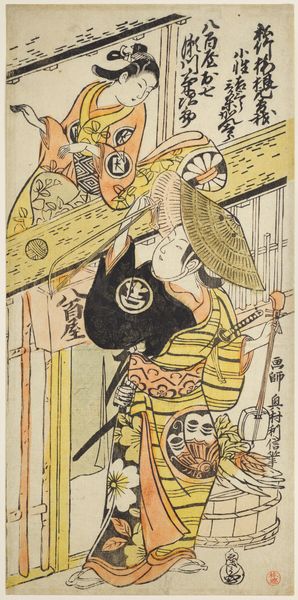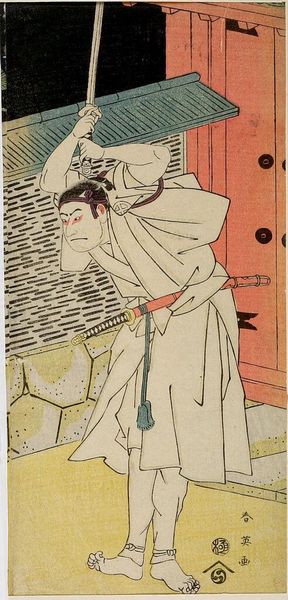
Copyright: Public Domain: Artvee
Curator: This striking woodblock print is entitled "Taira no Tadamori and the Oil Thief," crafted in 1885 by Tsukioka Yoshitoshi. Notice the dramatic composition and atmospheric perspective; what is your immediate take? Editor: I am struck by how immediate this piece feels despite its age, you can almost smell the damp earth and feel the cold rain. The roughness of the figure’s bare legs versus the sharp lines of the peering face tells a rich story, regardless of cultural background. I immediately focus on process and craft, and ask, what kind of tools and training would create an image like this from wood? Curator: Yes, the emotional tone is carried by this striking dichotomy of figures in low social strata contrasted with the nobleman Tadamori. Yoshitoshi frequently used this play between archetypes and shadow to explore anxieties over modernization during the Meiji era. The oil thief’s crude, exposed features highlight his vulnerable position, drawing a visual metaphor for the destabilizing fears about traditional society's collapse amid economic changes. What stories do you perceive embedded in the material handling itself? Editor: You know, looking at it, I am intrigued by the lack of refinement of the background contrasted against the precision of line in the faces. It's such an astute use of negative space and selective detail; this print must have taken enormous skill to execute those nuances on a block. Knowing how materials and printing shops operated informs my idea that there must be layers of economic collaboration implicit in it; decisions about where to focus labor affect visual interpretation as well. It must be that collaborative craft, working in very close quarters that enables so precise a narrative so visually. Curator: I agree! Beyond the historical anxiety and material artistry you see in this compelling tableau, the visual vocabulary contains very potent signifiers about the changing symbolic order in Japanese society. For example, the thief represents not just poverty but also the transgression of boundaries that comes with societal breakdown, thus explaining his somewhat grotesque representation. Even a detail like bare feet could carry a lot of significance about one’s displacement and estrangement from societal protection in those transitional eras. Editor: Indeed, and in this image, the bare feet seem very purposeful—rough, raw and seemingly connected to earth as a counterweight against other societal constructs depicted! The piece holds that tension of low and high social class beautifully as revealed both in what is represented, and in how it is represented through a very specific laborious and refined craft. Curator: Seeing that reflected within these details makes Yoshitoshi’s statement resonate powerfully across time. Editor: Absolutely; the print's visual and material complexity leaves a lot to consider!
Comments
No comments
Be the first to comment and join the conversation on the ultimate creative platform.
